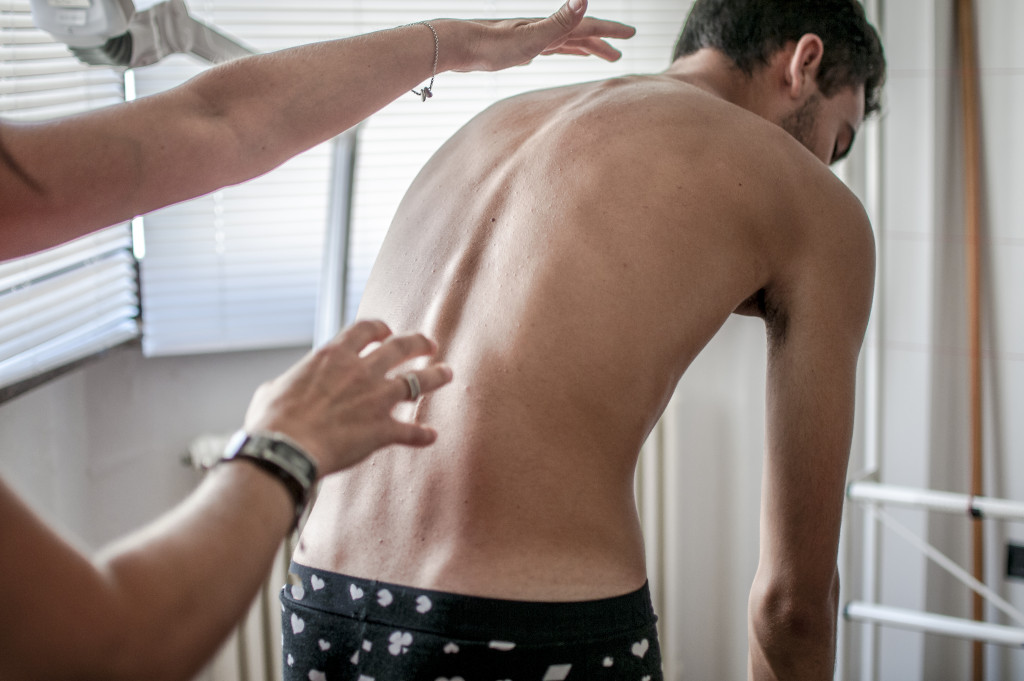Experts say that scoliosis affects about 2-3 percent of people. It’s a disease that affects the curvature of the spine, and when left neglected and untreated, can get worse over time. More often than not, doctors catch it during patients’ formative years, when they’re 10 to 15 years old, but adults can be diagnosed too.
Regardless of how old you are, there are plenty of things you can do to care for your well-being when you’ve been diagnosed with scoliosis. It must be especially frustrating if you are someone who loves fitness and works hard to stay healthy. Here are some self-care tips for your mind and body on your way to recovery.
Ask your doctor about anything and everything
Whatever questions you may have, even if they feel asinine to you, don’t hesitate to ask your doctor. They will be able to answer whatever questions you may have, and they can provide solutions to your day-to-day comings and goings. Some questions you can ask include:
- “What kind of exercises can I do given my condition?”
- “Do I need surgery? If not right now, will it come to a point in time when it will be necessary?”
- “What should my diet consist of?”
- “What is the best, safest, and healthiest sleeping position?”
And whatever else you can think of. No question is off-limits. Don’t just rely on information from the internet because while you may receive some general advice, no one knows your specific case more than your orthopedic surgeon or your primary care provider. And whatever advice your doctor gives, make sure to follow them and let them be the foundation upon which you build a new lifestyle.
Explore exercises that were developed specifically for people with scoliosis
With your doctor’s advice, consider exploring the Schroth Method, which is an exercise-based way to treat scoliosis. It’s a physio-therapeutic program that uses exercise and stretching to help treat scoliosis without resorting to surgery. It was named after renowned physiotherapist Katharina Schroth, who helped change countless scoliosis patients’ lives with the method.
Book an appointment with a clinic that specializes in the program. Make sure you work with a reputable clinic that knows the ins and outs of the program to ensure that your posture will improve and not worsen as you work together.
Know the dos and don’ts

Here are some dos and don’ts when you’re recovering from scoliosis:
- Do start early intervention. The day to start treatment plans and lifestyle changes is when you get your diagnosis.
- Do practice good sleeping habits. Make sure you have a quality mattress—a firm one that fits your body well. Skip the cushiony mattresses for now, and compensate by using extra pillows.
- Do change your positions frequently, whether sitting or standing. Staying in place for too long is not the healthiest for your spine.
- Do stretch as much as you can. Hang from a bar, do a static chest stretch, bend in the direction of your curve. Just stand up and frequently stretch throughout your day.
- Do practice good office ergonomics. When your monitor is not in your eye line, it might cause your head and neck to bend over too much.
- Do improve your body’s core strength because your core muscles can help support your spine.
- Do stay in touch with your doctor so that they can keep track of your progress and so you can ask what you should keep doing in terms of your physical fitness.
- Don’t engage in physical activities that trigger or aggravate your condition. Some examples include texting too much or bending your head to look at something more closely.
- Don’t sleep on your stomach because doing so positions your neck in an awkward or unnatural place, and it arches your back even more. Whenever you sleep, choose a neutral position, like sleeping flat on your back. You can make use of pillows to fill the gaps so that your body remains neutral and straight.
- Don’t strain your torso by extending it too much. Specific yoga poses, and even those in gymnastics, ballet, and other dance types, can help further rotate your curve’s hollow. Consult with your doctor about the best yoga poses and stretches for your specific case.
Care for your mind and spirit
And last but not least, don’t forget to care for your mind and spirit too. Avoid comparing yourself with others, and believe that you have your own journey. With the help of the medical professionals in your life, you are on your way to being your healthiest self. Be kind to yourself as you work towards healing and believe you will get through it. Good luck!




